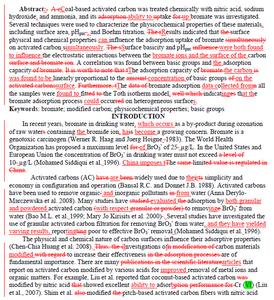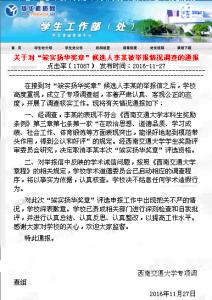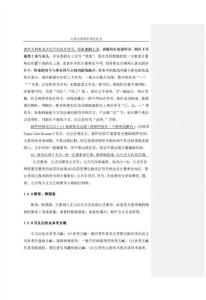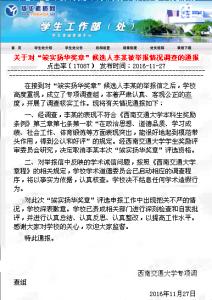学术论文是某一学术课题在实验性、理论性或预测性上具有的新的科学研究成果或创新见解和知识的科学记录,或是某种已知原理应用于实际上取得新进展的科学总结。下面是小编整理的英语学术论文范文,希望对大家有帮助。
英语学术论文范文:马丁. 路德.金 《我有一个梦》的文体分析Abstract: On the base of the definition of stylistics, this thesis gives a detailed analysis of some the of stylistic devices used in the famous speech by the well-known American civil rights movement leader Martin Luther King, Jr., and then probes into the stylistic characteristics of speech as a style.
Key words: Stylistics, Stylistic devices, analysis, speech.
马丁. 路德.金 《我有一个梦》的文体分析
摘 要:本文首先阐述了文体学的定义,并在此基础上对对美国着名黑人领袖马丁. 路德.金的着名演讲《我有一个梦》中所使用的文体手段进行了详尽的分析,进而对演讲文体的风格进行了简要的论述。
关键词:文体学;文体手段;分析;演讲
As an interdisciplinary field of study, stylistics promises to offer useful insights into literary criticism and the teaching of literature with its explicit aims and effective techniques. It is very useful in the analysis of various styles of writing. In this thesis, the author tries to offer a stylistic analysis of the famous speech by Martin Luther king, Jr. I Have a Dream.
1. Introduction: Definition of Stylistics and Stylistic Analysis
As far as the definition of stylistics is concerned different scholars define the branch of study in different ways. Wales defines stylistics simply as “ the study of style” (1989:437), while Widdowson provides a more informative definition as “the study of literary discourse from a linguistic orientation” and takes “a view that what distinguishes stylistics from literary criticism on the one hand and linguistics on the other is that it is essentially a means of linking the two” (1975:3). Leech holds a similar view. He defines stylistics as the “study of the use of language in literature” (1969:1) and considers stylistics a “meeting-ground of linguistics and literary study”(1969:2). From what Widdowson and Leech say, we can see that stylistics is an area of study that straddles two disciplines: literary criticism and linguistics. It takes literary discourse (text) as its object of study and uses linguistics as a means to that end.
Stylistic analysis is generally concerned with the uniqueness of a text; that is, what it is that is peculiar to the uses of language in a literary text for delivering the message. This naturally involves comparisons of the language of the text with that used in conventional types of discourse. Stylisticians may also wish to characterize the style of a literary text by Systematically comparing the language uses in that text with those in another. Halliday points out, “The text may be seen as ‘this’ in contrast with ‘that’, with another poem or another novel; stylistics studies are essentially comparative in nature…”(1971:341). On this points, Widdowson is of the same opinion as Halliday. He says:“All literary appreciation is comparative, as indeed is a recognition of styles in general” (1975:84). Thus, we may conclude that stylistic analysis is an activity that is highly comparative in nature.
2. Related Information of the Speech I HAVE A DREAM and Its Author
Martin Luther King, jr. was born on January 15, 1929 in Atlanta, Georgia, the son of a clergyman and the grandson of a slave. After attending several colleges he received his Ph. D. in theology from Boston University in 1955. He led the bus boycott in Montgomery, Alabama in 1955-1956. As president of the Southern Christian Leadership Conference, he then led civil rights demonstrations in many cities. In 1963 he helped organize the march on Washington, which brought together more than 200,000 people. A leader in establishing a nonviolent civil rights movement, King was awarded the Nobel Peace Prize for 1964. King was assassinated in Memphis, Tennessee, in 1968, shortly before his fortieth birthday. Since then, he has become an American folk hero, and on November 2, 1983, a law honoring Dr. King was signed by President Rigan, effective January 1986, making the third Monday of January a national holiday. He is the only U. S. citizen other than George Washington to be recognized in this way.
In 1863 President Abraham Lincoln issued the Emancipation Proclamation freeing all slaves in the United States. One hundred years after this decree was signed, however, the life of blacks was still “sadly crippled by the manacles of seGREgation and the Chains discrimination.” On August 28, 1963, a quarter of million people of all races came to Washington, D. C., to show their support for freedom and justice for all Americans, and for black people in particular. At that demonstration, Martin Luther King, jr. delivered this famous speech I HAVE A DREAM, widely regarded as the most eloquent statement of the black people’s dreams and aspirations ever made. In his speech, Dr. King told the world, “I have a dream” that equality would come “to all of God’s children.” He said he wanted everyone to be able to “join hands and sing in the words of the old Negro spiritual, ‘Free at last! Free at last!…’”
3. A Stylistic Analysis of the Speech (An analysis of some of the stylistic devices used in the speech)
Martin Luther King’s speech of August 28, 1963 is widely regarded as one of the most powerful ever delivered in the United States. Although this address was delivered orally, it was read from a written text composed with GREat care. It is an example of formal English with a convincing style. Here are some of the stylistic devices (which maybe considered traditionally as rhetorical devices) used by Dr King to inspire and persuade.
3.1 Repetition:
Throughout the speech, Dr. King repeats words and sentence. This is a very outstanding feature in this speech called repetition. It belongs to the stylistic device of syntactic over-regularity. The term repetition is restricted to mean the case of exact copying of a certain previous unit in a text such as a word, phrase or even a sentence (Leech, 1969), because all the over-regular features in literature are in some sense repetitious. Used in speech, repetition not only makes it easy for the audience to follow what the speaker is saying, but also gives a strong rhythmic quality to the speech and makes it more memorable. In paragraphs 8 through 16, for example, King uses the words “I have a dream” nine times. This repetition helps to achieve the function of coherence in discourse and the function of reinforcement in mood and emotion, expressing the speaker’s strong emotion of longing for freedom, justice, righteousness and a much more united nation of all of God’s children.

If we study the whole speech more carefully, it is easy for us to find many other examples of repetition used.
① But one hundred years later, we must face the tragic fact that the Negro is still not free. One hundred years later, the life of the Negro.
② is still sadly crippled by the manacles of seGREgation and the chains of discrimination. One hundred years later, the Negro lives on a lonely island of poverty in the midst of a vast ocean of material prosperity. One hundred years later, the Negro is still languishing in the corners of American society and finds himself an exile in his own land.
Here the phrase “one hundred years later” has been repeated three times, seemingly indicating that it is really a long time for the Negro to wait for the coming of the time of justice and righteousness.
②But we refuse to believe that the bank of justice is bankrupt. We refuse to believe that there are insufficient funds in the GREat vaults of opportunity of this nation. (Par.4)
the phrase “we refuse to believe that…” has been used twice to indicate the speaker’s good hope.
③ Now is the time to make real the promises of democracy. Now is the time to rise from the dark and desolate valley of seGREgation to the sunlit path of racial justice. Now is the time to open the doors of opportunity to all of God’s Children. Now is the time to lift our nation from the quicksands of racial injustice to the solid rock of brotherhood. (Par.4)
In this short passage, the clause “Now is the time to…” has been used four times to emphasize the fierce urgency of “NOW” and to encourage and persuade the blacks to take immediate action to rise above and gain their own rights and freedom.
Other examples of repetition can still be easily found throughout the speech. In par. 7, the words “we can never/cannot be satisfied as long as…” has been used as many as five times to show the determination and persistence of the black people; in par. 17, the words “with the faith we will be able to…” has been repeated twice for the purpose of showing how strong the faith of the black people is to struggle for the brotherhood of “all of God’s children”, and how strong the faith of the black people is to believe that they “will be free one day”. Now let’s enjoy another example.
④And if America is to be a GREat nation this must become true. So let freedom ring from the prodigious hilltops of New Hampshire! Let freedom ring from the heightening Alleghenies of Pennsylvania!
 爱华网
爱华网



